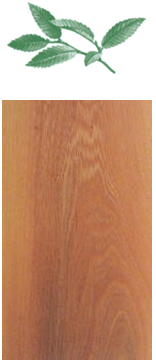CocoLumberElm

Elm
Uses:
Elm lumber is used principally in boxes, baskets, crates, and slack barrels; furniture, agricultural supplies and implements; caskets and burial boxes; and vehicles. The hard elms are preferred for some uses where more strength is required.
Description:
The sapwood of the elm is nearly white and the heartwood light brown, often tinged with red.
Range:
Six species of elm grow in the United States: American elm, slippery elm, rock elm, winged elm, cedar elm, and September elm. The supply of American elm is threatened by two diseases, Dutch Elm and phloem necrosis, which have killed hundreds of thousands of trees. American elm is also known as red elm, water elm, and gray elm. Slippery elm is also known as red elm or basket elm.
Physical Properties:
The elms may be divided into two general classes, hard elm and soft elm, based on the weight and strength of the wood. Soft elm is moderately heavy, has high shock resistance, and is moderately hard and stiff. Hard elm species are somewhat heavier than soft elm. Elm has excellent bending qualities.
Solution:
Ideal substitute of Red Oak, White Oak and sometimes White Oak as well.
